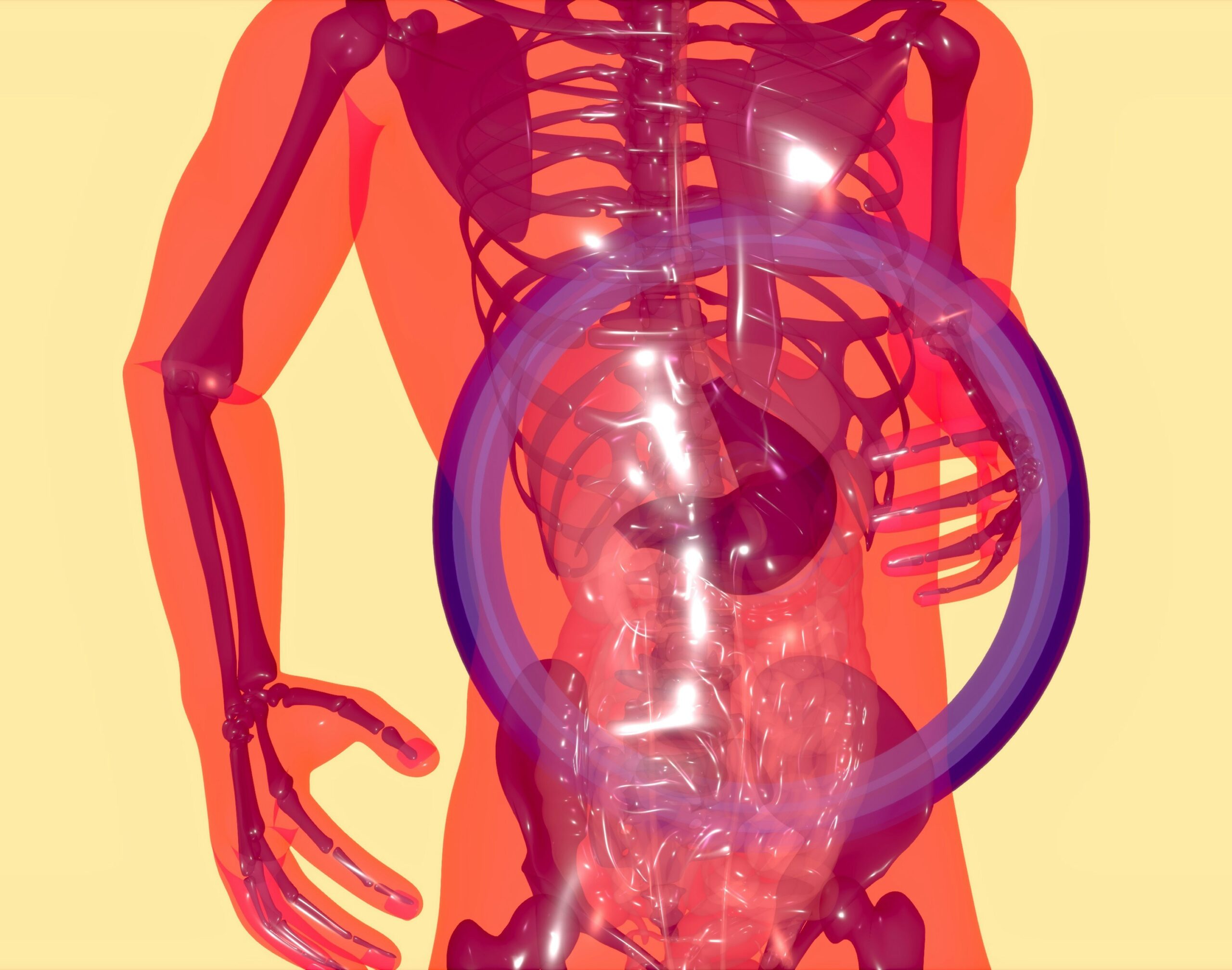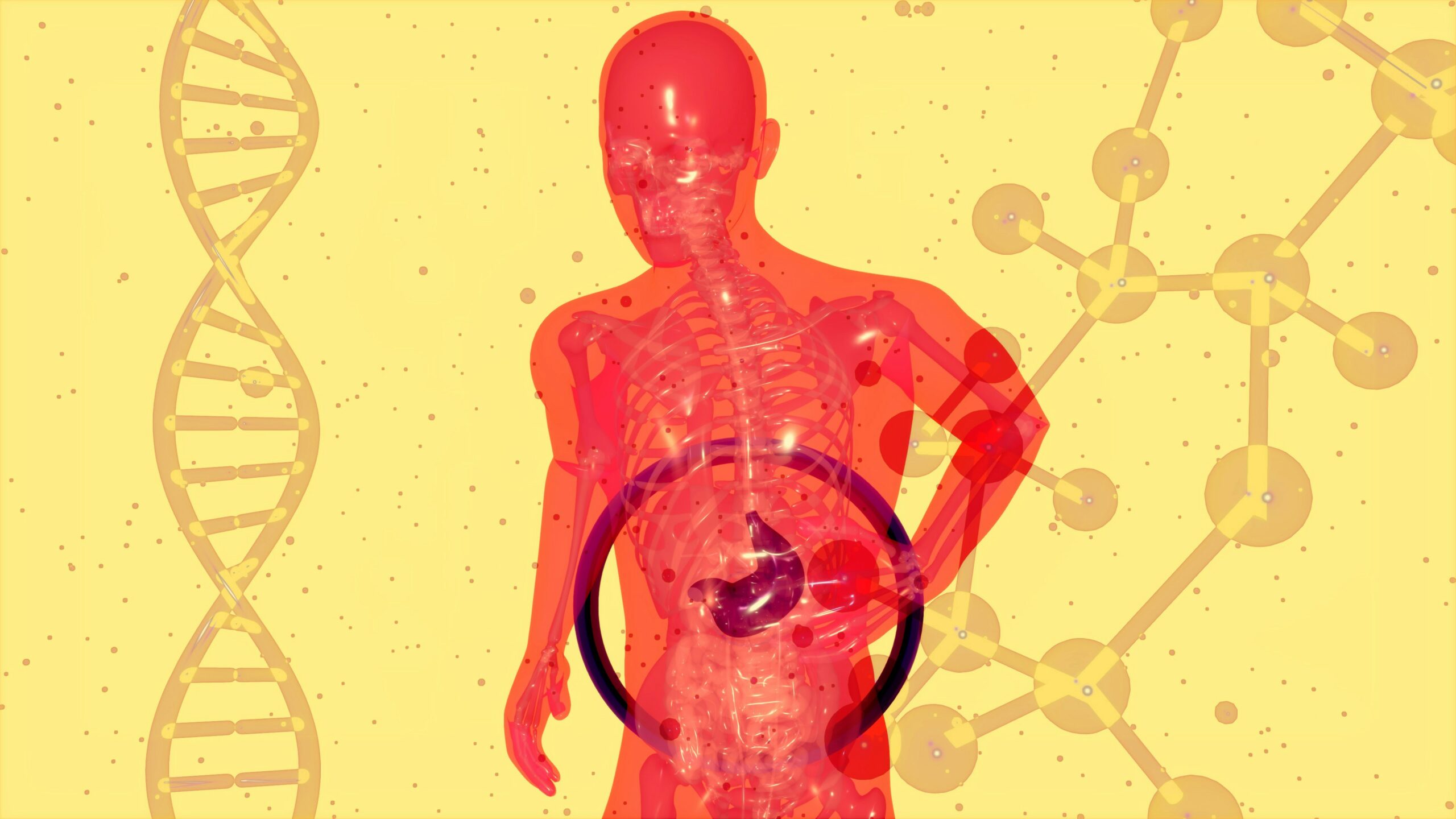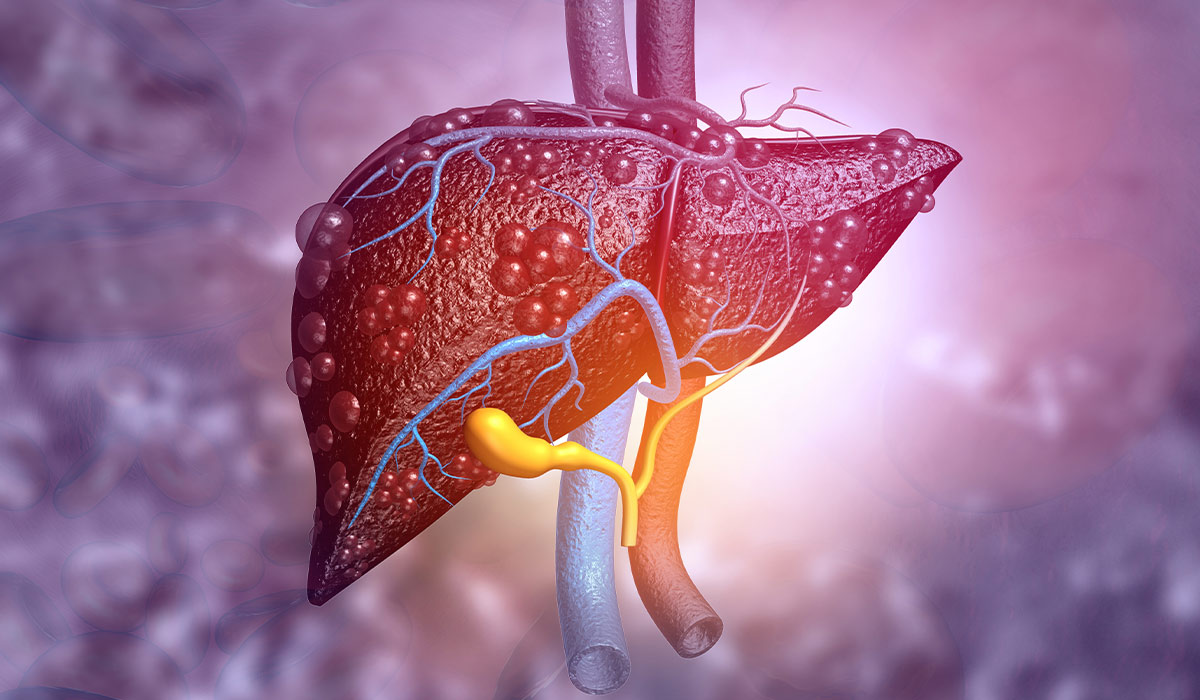Hepatitis A is a disease of viral origin. The infection is caused by specific viruses that attack the liver and cause various symptoms. A standard route of infection is through food, meaning insufficient hand hygiene or contaminated food can lead to the development of the disease. The symptoms of hepatitis A are often uncharacteristic, and many infections are asymptomatic, so the disease can be challenging to diagnose.
If hepatitis A is suspected, laboratory tests are done to detect pathogens in the body. Treatment of hepatitis usually depends on the patient's condition. Severe forms of infection require specialized medical care. However, treatment is recommended for milder forms of the disease to alleviate symptoms. The consequences of hepatitis A infection can be dangerous, so the disease should not be underestimated.

The cause of hepatitis A is the entry of viruses into the human body. Hepatitis A virus (HAV) is responsible for the disease. HAV is a virus from the Picornaviridae family that is found worldwide. The oral-fecal route![]() can transmit the hepatitis A virus. Therefore, risk factors include:
can transmit the hepatitis A virus. Therefore, risk factors include:
Doctors point out that too infrequent hand washing can spread various bacteria, viruses, and other pathogens. Therefore, dirty hands can also cause hepatitis A virus infection. Frequent hand washing, especially before meals, is recommended to avoid diseases such as hepatitis.
Eating or drinking are ways for HAV to enter the body through the oral route. Sometimes, various environmental disasters and problems can cause water to become contaminated. In such cases, you should not drink water from the tap or different sources, as it can lead to infection. Also, vegetables and fruits should not be washed with water, as pathogens can be transferred to food.
The virus can pass to a different person through contact with an infected patient. Infection can occur through contact with blood or other body fluids. It has been noted that HAV infection can occur through anal sexual intercourse, as the viruses reside in the digestive and excretory systems.

Hepatitis A infection is relatively low in highly developed countries. The prevalence of hepatitis in a country correlates with socioeconomic![]() characteristics. Infection is, therefore, possible, especially with increased exposure to risk factors. Hepatitis A is not a chronic disease but has an acute, mild, or asymptomatic type. The asymptomatic type is most common in children. The disease can have a recurrent type, but it is rare.
characteristics. Infection is, therefore, possible, especially with increased exposure to risk factors. Hepatitis A is not a chronic disease but has an acute, mild, or asymptomatic type. The asymptomatic type is most common in children. The disease can have a recurrent type, but it is rare.
The hepatitis virus enters the human body in various ways. First, the virus settles in the liver, where it multiplies. Then, the pathogen is released into the intestines and is excreted in the feces. As a result of the multiplication of the virus and its harmful effects on the body, the following symptoms can occur:
Nausea and vomiting may occur during HAV infection. Inflammation can cause a wide range of uncharacteristic liver symptoms, including a lack of appetite and a feeling of discomfort in the stomach. Vomiting is a symptom of acute infection, which resolves after a few days.
Another uncharacteristic symptom of hepatitis A is abdominal pain. Patients describe liver pain as uncomfortable pressure and swelling in the abdomen. Most often, the pain is on the right side of the abdomen. Hepatitis pain may worsen when touched, coughing, or breathing deeply. In some cases, abdominal pain is accompanied by diarrhea![]() .
.
HAV infections cause general weakness, fatigue, and malaise. Some patients do not manifest any symptoms, while mild and more severe inflammations affect the body's overall state. Deterioration of mood is indicative of inflammation caused by hepatitis viruses.

Hepatitis A can also cause flu-like symptoms, making diagnosis even more difficult. The disease resembles the flu, with weakness and moderate fever appearing. In addition, there may be muscle aches and joint pains. Only the more typical symptoms of hepatitis, or specialized symptoms, can suggest inflammation caused by HAV.
A more characteristic symptom of hepatitis is jaundice. A change in the skin's color and the eyes' whites can recognize symptoms of jaundice. There is a yellowing of these areas, which may worry the patient. In addition to this, darker urine![]() may also be present. Jaundice is a common symptom of hepatitis A, which usually occurs in older children and adults. However, it is worth knowing that the concentration of the virus in stool tests is higher in the period before the onset of jaundice symptoms. This is also when the disease is most contagious. In contrast, a week after the onset of jaundice, the infectivity of HAV decreases.
may also be present. Jaundice is a common symptom of hepatitis A, which usually occurs in older children and adults. However, it is worth knowing that the concentration of the virus in stool tests is higher in the period before the onset of jaundice symptoms. This is also when the disease is most contagious. In contrast, a week after the onset of jaundice, the infectivity of HAV decreases.
In some cases of hepatitis A, organ enlargement can occur. Infectious causes, wildly viral causes, can cause organ enlargement; in the case of HAV, there is liver enlargement. Liver enlargement can impair liver function and increase the intensity of unpleasant disease symptoms.
Hepatitis A has uncharacteristic symptoms, so diagnosis usually involves performing the necessary examinations and tests. HAV infection can be detected by laboratory tests, which help to make a proper diagnosis that distinguishes the condition from other conditions with similar symptoms. In some cases, additional tests are also necessary. Diagnostic methods used in hepatitis A include:

If hepatitis is suspected, doctors may recommend drawing blood and performing specific tests. Serological tests![]() detect immunoglobulin antibodies, which identify HAV. Antibodies are usually detected in the earliest stages of hepatitis and can persist in the body for six months after infection. In addition to this, various blood test parameters can help diagnose HAV. Among other things, they can reveal lymphocytosis or indicate the possibility of liver damage and different complications. Bilirubin levels
detect immunoglobulin antibodies, which identify HAV. Antibodies are usually detected in the earliest stages of hepatitis and can persist in the body for six months after infection. In addition to this, various blood test parameters can help diagnose HAV. Among other things, they can reveal lymphocytosis or indicate the possibility of liver damage and different complications. Bilirubin levels![]() may also be elevated in cases of HAV inflammation. Examination of liver enzymes
may also be elevated in cases of HAV inflammation. Examination of liver enzymes![]() may also be necessary.
may also be necessary.
Lab tests to detect HAV use various clinical samples, such as blood, bile, and serum. However, a common method used for diagnosis is collecting and examining a stool sample, as hepatitis viruses are often identified in this material. Like the bacterial test, the virological test is suitable for detecting the etiological agent causing the gastrointestinal infection. A stool sample is tested to identify infection with various viruses, which helps differentiate hepatitis A from other viral infections.
In rare, severe cases, it may be necessary to take a slice of the liver for the goal of a biopsy. A liver biopsy is an invasive type of test involving the collection of liver tissue of a small size. Thus, this type of test allows for the analysis of changes in the liver as a result of disease. It can be of particular importance in the case of complications of hepatitis A.
Molecular tests are sometimes helpful in diagnosing hepatitis A. When a patient is examined, serological tests are sufficient to diagnose. However, molecular tests are suitable for use as additional methods where serological tests are ineffective, which sometimes happens. Molecular tests can detect viral nucleic acids, which helps prevent the spreading of infection. Molecular tests are also suitable for detecting viruses in food![]() . A standard method is to use molecular fluorescent detectors by changing the color of the solution under UV light, which results in the simultaneous identification of HAV and HBV.
. A standard method is to use molecular fluorescent detectors by changing the color of the solution under UV light, which results in the simultaneous identification of HAV and HBV.

Proper diagnosis and treatment for hepatitis A is crucial, as the disease can be life-threatening. Severe cases of hepatitis with complications can cause patients to die. HAV can take a severe course, especially in immunocompromised patients with comorbidities. Liver failure and liver damage worsen the prognosis of hepatitis. Patients with a severe course require specialized treatment. By contrast, treatment is more accessible in milder cases, and patients recover relatively quickly.
In most cases of uncomplicated HAV infections, drugs or medical treatments are unnecessary. In such cases, symptom control, rest, and an easily digestible diet are sufficient. Complete resolution of symptoms occurs after the disease has passed, lasting from several weeks to months. Then, caution is also advised to avoid spreading the hepatitis virus to different people.
In some cases, antiviral therapy is used. Drugs that act on viruses help in cases of acute hepatitis. The severity of symptoms is reduced, and the infectious period of the disease is shorter with the use of drugs. Therefore, antiviral drugs can also be used to prevent hepatitis, as they reduce the risk of hepatitis outbreaks. Various types of antiviral drugs are used; however, additional research on them is necessary, as no specific drug for hepatitis A has been developed to date.
In cases of complications and severe hepatitis A, surgical interventions may be necessary. Such cases include patients with liver failure caused by HAV infection. Therefore, Liver transplantation is used in emergencies where different treatments have already been used and have failed. Thus, in some cases, liver transplantation is necessary and can save lives.

Countries are using various preventive interventions to protect against hepatitis outbreaks. These include improved sanitation, food safety, and the practice of vaccination. Vaccines play a critical protective role against HAV infections. Hepatitis A vaccines are available and have high efficacy against the virus. Vaccines containing a single antigen that works against HAV are available in the United States![]() , and vaccines against HAV and HBV are also possible. Children aged one year or older can be vaccinated. In addition, vaccination is essential for people who travel to countries at risk of HAV infection and different risk groups.
, and vaccines against HAV and HBV are also possible. Children aged one year or older can be vaccinated. In addition, vaccination is essential for people who travel to countries at risk of HAV infection and different risk groups.
In addition to hepatitis A, different types of hepatitis should be considered at the stage of diagnosis. Different types of hepatitis are responsible for different viruses, and the diseases may have a different course. Types of hepatitis include:

This article describes this type of hepatitis. The disease is caused by HAV, mainly transmitted by the fecal-oral route. Hepatitis A most often has a mild course but can risk the patient's life. A vaccine has been developed that effectively protects against this type of hepatitis. Antiviral drugs are rarely used.
Hepatitis B is a different type of viral infection that attacks the liver. Hepatitis B virus (HBV![]() ), a virus belonging to the Hepadnaviridae family, is distinguished. HBV infection most often occurs through contact with infected blood or body fluids. As a result, perinatal HBV infection can occur. The symptoms of infection are very similar to the course of HVA. Protective vaccines are available for the hepatitis B virus. Antiviral drugs are also used and are noted for their effectiveness.
), a virus belonging to the Hepadnaviridae family, is distinguished. HBV infection most often occurs through contact with infected blood or body fluids. As a result, perinatal HBV infection can occur. The symptoms of infection are very similar to the course of HVA. Protective vaccines are available for the hepatitis B virus. Antiviral drugs are also used and are noted for their effectiveness.
Another type of hepatitis is caused by the hepatitis C virus (HCV![]() ). It is an RNA virus belonging to the Flaviviridae group. This type of pathogen is projected directly into the bloodstream. HCV most often causes hepatitis in the chronic form, which requires treatment. No vaccines have been developed against HCV, but effective antiviral drugs are used to treat most cases of infection.
). It is an RNA virus belonging to the Flaviviridae group. This type of pathogen is projected directly into the bloodstream. HCV most often causes hepatitis in the chronic form, which requires treatment. No vaccines have been developed against HCV, but effective antiviral drugs are used to treat most cases of infection.
The least known disease of the hepatitis genus is hepatitis D virus (HDV![]() ) infection. HDV is classified as a subvirus and depends on a different hepatitis B virus. Infection usually occurs at the same time as HBV infection. Superinfection with it causes a more severe course and deterioration of the patient's condition. Vaccination involves HBV, on which the hepatitis D virus is dependent.
) infection. HDV is classified as a subvirus and depends on a different hepatitis B virus. Infection usually occurs at the same time as HBV infection. Superinfection with it causes a more severe course and deterioration of the patient's condition. Vaccination involves HBV, on which the hepatitis D virus is dependent.
Hepatitis E virus (HEV![]() ) also can cause a disease. Infection occurs via the fecal-oral route, most often through consuming poorly prepared meat. HEV infections are most often acute. For pregnant women, HEV can be dangerous, causing a severe course. Vaccination against HEV is currently only available in China.
) also can cause a disease. Infection occurs via the fecal-oral route, most often through consuming poorly prepared meat. HEV infections are most often acute. For pregnant women, HEV can be dangerous, causing a severe course. Vaccination against HEV is currently only available in China.
Hepatitis G, which HGV![]() causes, is also distinguishable. This type of hepatitis is also less known in medical science because it is less common. Its clinical significance is currently in question.
causes, is also distinguishable. This type of hepatitis is also less known in medical science because it is less common. Its clinical significance is currently in question.
HAV virus is mainly transmitted via the fecal-oral route. Hepatitis A usually has a mild course but can be life-threatening for the patient. Symptoms are often uncharacteristic, so diagnosis is critical. A vaccine has been developed against this type of hepatitis, effectively protecting against the disease. Antiviral drugs are rarely used.
Table of Contents

Hepatitis C is an infectious disease caused by the hepatitis C Virus. Left untreated, it can lead to severe consequences.… read more »

Epstein Barr Virus is a pathogen that causes infectious mononucleosis and many other diseases. Learn about the risks associated with… read more »

The Ebola virus continues to pose a threat to those living in Africa. Learn about the risks associated with Ebola… read more »

Herpes is a viral infectious disease that most often affects the lip area. Herpes virus infections are common. What does… read more »

Jaundice is a disease symptom that involves yellowing of the skin, mucous membranes and sclera. What are its causes? How… read more »

Fatty liver is a condition in which fat builds up inside the liver. It usually doesn't cause symptoms and is… read more »

Liver cancer is a tumor that is found in the liver. The most common symptoms include jaundice, unexpected weight loss,… read more »

The liver is part of the digestive system. It performs over 500 functions in the body. It is impossible to… read more »

The vaccine imitates a natural infection and leads to the development of immunity similar to that obtained during the first… read more »